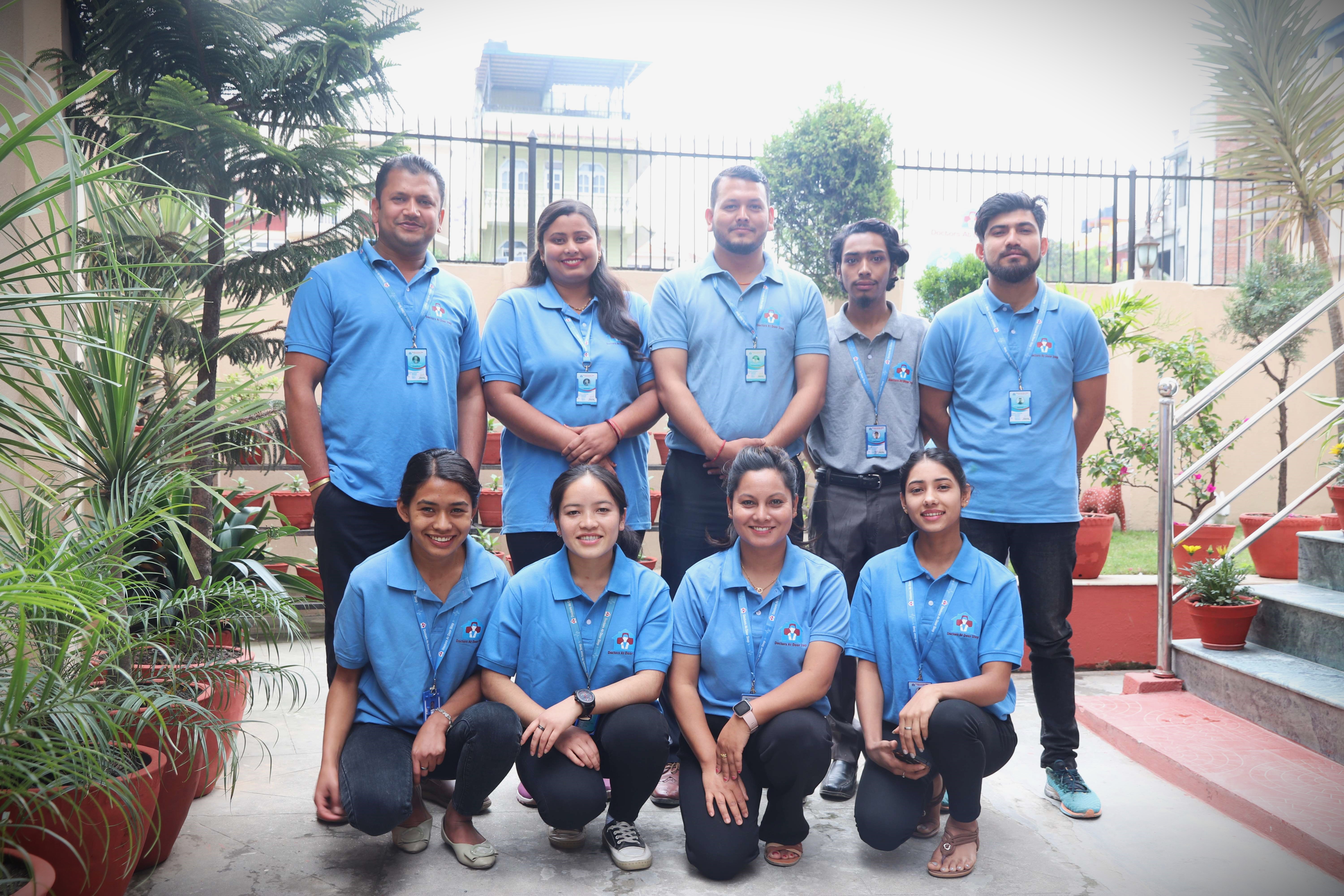Home health care services in Nepal are rapidly gaining importance as changing demographics, social patterns, and healthcare needs reshape the landscape of medical access. According to the 2021 census, approximately 10.2% (about 3 million) of Nepal’s population is aged 60 or over . As families are increasingly dispersed—often with relatives working abroad—the need for professional caregivers has never been more pressing.
🚨 Why Home Care Matters in Nepal
Aging Population
Nepal’s senior population is growing at 3.77% annually, far outpacing the national growth of 1.35% (frontiersin.org). Many seniors live in rural areas with limited access to hospitals, with only 21% residing within three hours of the nearest emergency facility (en.wikipedia.org).
Rise in Chronic Conditions
Longer lifespans in Nepal—72.4 years on average—bring higher rates of chronic illnesses like hypertension, diabetes, and mobility issues (en.wikipedia.org). Home-based monitoring and care greatly improve outcomes and reduce avoidable hospital visits.
Changing Family Dynamics
As younger Nepalis seek work and study abroad, older adults are left behind, often alone . Home care bridges this gap, offering trusted, in-person support and companionship.
Services Offered by Home Care Providers
Most reputable home care providers in Nepal offer:
Medical services: Nursing, doctor visits, wound dressing, medication administration
Geriatric care: Alzheimer’s and dementia support, fall prevention, rehabilitation
Post-hospitalization care: Physiotherapy, nursing stabilisation, oxygen support
Telemedicine and remote monitoring, expanding access to specialists in remote regions (en.wikipedia.org)
Providers such as Home Care Nepal and Health Home Care Nepal operate across multiple districts—Kathmandu, Pokhara, Lalitpur, Bhaktapur—with teams of certified nurses and doctors . These organizations report 750+ clients served and 650+ employees, signaling significant market entry and trust .
🌱 Market Growth: The Digital Health Surge
The digital health sector in Nepal is projected to hit €82.8 million by 2025, with a CAGR of 6.6% through 2029 (es.statista.com).
Home care providers using telemedicine tools tap into this growth by enabling remote patient monitoring and specialist consultations .
As smartphone and internet access rise, digital home care is becoming increasingly viable even in rural Nepal.
Benefits for Patients & Families
Advantage Description
Comfort & Familiarity Patients stay in their own homes surrounded by loved ones
Personalized Care Services are tailored to individual needs vs. hospital “one-size-fits-all” model
Reduced Costs Home care often costs less than prolonged hospital stays and eliminates transport barriers
Family Relief Offers emotional relief for families abroad, assuring consistent care at home
Challenges to Overcome
Lack of Regulation
Nepal has no unified licensing system for home care providers, affecting quality and accountability .
Cost & Accessibility
While many providers aim to serve all demographics, rural families may struggle with affordability.
Cultural Norms
Traditional Nepali family systems expect elder care at home, which both supports the concept and introduces cultural resistance toward outsourcing care .
Infrastructure Limitations
Remote areas suffer from unreliable internet, inadequate transport, and limited health monitoring tools .
Looking Ahead: Opportunities & Solutions
Standardization & Certification
Establishing training and licensing standards will increase trust and service quality.
Government & NGO Partnerships
Collaboration with bodies like the Ministry of Health can help subsidize cost and create scalable models across provinces.
Focused Elderly Care Programs
Integration with national senior programs—like those offering health stipends to those over 70—can target support for the most vulnerable (researchgate.net, en.wikipedia.org).
Digital Integration
Widespread use of telemedicine platforms, electronic medical records, and remote monitoring aligns with Nepal’s growing digital health market trend (es.statista.com).
With 10% of Nepal’s population over 60, limited hospital access in rural areas, and shifting family dynamics, home health care emerges as both a necessity and an opportunity for innovation. Companies like Doctor at Doorstep Nepal, Home Care Nepal, and Health Home Care Nepal are leading this essential transformation—by blending traditional in-home care with modern telehealth and nursing services.
By addressing challenges—standardization, affordability, infrastructure—and continuing to leverage digital health advances, home care providers in Nepal can become the backbone of supportive and accessible healthcare for seniors, chronic patients, and families living apart. As this sector grows, it not only satisfies a vital need but also sets the stage for a healthier, more resilient Nepal.

Comments (0)
No comments yet. Be the first to comment!
Leave a Comment